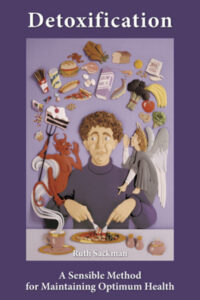Evidence shows that the pea has been around since prehistoric times. Although the pea is of uncertain origin, it is probably native to Central Europe or Central Asia. It is also probable that peas were brought from Greece or Italy by the Aryans 2,000 years before Christ.
The green pea is a natural soluble mixture of starch and protein. Fresh peas are alkaline-forming, while dried peas have a tendency to produce allergic reactions and to cause gas, particularly when eaten with too much protein or concentrated starch. The best quality pea is one that is young, fresh, tender, and sweet. Use fresh, young peas in order to obtain the greatest food value and flavor. The pod should be velvety soft to the touch, fresh in appearance, and bright green in color. The pods should be well filled and the peas well developed, but not bulging. The large ripe pea is really a seed and should not be considered a vegetable.
The real “sugar” pea is grown primarily in Europe and is little known in the United States. Because Chinese food is so popular in this country, there is a variety of pea grown and picked for the thick, soft, green pods that are used in these dishes. Their roughage is great for the intestinal tract, and they are very nourishing. However, this herbaceous, tendril-climbing legume can be eaten, pod and all, in any variety, if picked young enough. Those people who are troubled with a lot of gas or with a sensitive stomach wall or intestinal tract may find the hulls of the more mature pea irritating. In such cases, the peas should be pureed, or liquefied, to avoid irritating disturbances.
Fresh green peas tend to lose their sugar content unless they are refrigerated to about 32 degrees F shortly after being picked. They should be cooked soon after they have been picked, for they lose their tenderness and sweetness as they age. Shell just before cooking, retaining a few of the pods to cook with the peas for additional flavor. Cook in as little water as possible, so that no water need be discarded after cooking. If some pot liquor does remain after cooking, use it soup or as a base in the liquefied vegetable drink.
Never cook peas in bicarbonate of soda water in order to keep their fresh green appearance. This method not only destroys the food value and digestibility of the pea, but is totally unnecessary. Peas cooked in a vessel that is vapor-sealed or that has a tight lid, or steamed in parchment paper, with little water, retain their flavor, greenness, and vitamins. When combined with carrots or turnips, peas are particularly tasty, and when a little onion is added, they need not be seasoned. If seasoning is desired, add a little dehydrated broth powder after cooking and serve with butter.
The pea is a fairly rich source of incomplete protein. As an alkaline ash vegetable, it is highly nutritious when eaten raw, and is more easily digested than beans. However, it takes a strong digestive tract to properly digest raw peas. To eat in their raw state, liquefy, and combine with other vegetables, proteins, or starches, to help aid in their digestion. Do not combine with fruits.
The therapeutic Value of Peas
This alkaline-reacting vegetable is an outstanding source of vitamins A, B1, and C. The pea pods are very high in chlorophyll, iron, and calcium-controlling properties. Discarded pods are discarded vitamins and valuable minerals. Fresh garden peas are slightly diuretic in action. They also give relief to ulcer pains in the stomach because they help use up the stomach acids. In cases of ulcers, however, peas should be pureed. People who have a vitamin A deficiency should eat them raw, liquefied, or in juice. They should be eaten in combination with non-starchy vegetables to get the full value of the vitamin A they contain.
Nutrients in one pound of Peas
Calories: 201
Protein: 13.7g
Fat: 9.8g
Carbohydrates: 36.1g
Calcium: 45mg
Phosphorus: 249mg
Iron: 3.9mg
Vitamin A: 1,390 I.U.
Thiamine: .69mg
Riboflavin: .33mg
Niacin: 5.5mg
Ascorbic Acid: 54mg





